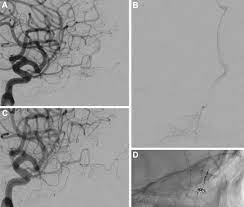
Fistulagram Albuquerque
Fistulagram Albuquerque, also known as posturography, is a non-invasive diagnostic tool used to visualize and assess vascular anomalies such as fistulas and pseudoaneurysms. This procedure is performed in Albuquerque at specialized radiology centers and is an essential tool in the diagnosis and treatment of these conditions.
What Is Fistulagram Albuquerque:
A Fistulagram Albuquerque is an abnormal connection between two blood vessels, while a pseudoaneurysm is a localized dilation of a blood vessel. These conditions can occur in various parts of the body and can be caused by a variety of factors, including trauma, surgery, and certain medical conditions.
The fistulagram procedure begins with the injection of a contrast dye into the fistula or pseudoaneurysm. The patient will then be placed under a special x-ray machine, which produces detailed images of the blood vessels and the contrast dye as it flows through them.
The images produced by the fistulagram are used by radiologists and vascular specialists to evaluate the size, location, and flow of the fistula or pseudoaneurysm. This information is essential for the planning and execution of treatment, which may include surgical repair or embolization (blocking the blood flow to the fistula or pseudoaneurysm).
What We Should Know About The Fistulagram Albuquerque:
One of the main advantages of a fistulagram is that it is a non-invasive procedure, unlike traditional surgical methods. This means that there is no need for incisions or general anesthesia, reducing the risk of complications and recovery time. Additionally, the procedure is relatively quick and can be performed in an outpatient setting.
Another advantage of the fistulagram is that it produces highly detailed images, which allows for accurate diagnosis and treatment planning. This is particularly important when dealing with complex fistulas and pseudoaneurysms, which can be difficult to visualize and treat using other methods.
Fistulagram Albuquerque How To get it?
The fistulagram is a relatively safe procedure, with few complications. The most common side effect is a mild allergic reaction to the contrast dye, which can cause itching, rash, or hives. In rare cases, there may be an allergic reaction to the contrast dye which can be severe, but this is rare. Patients are closely monitored during and after the procedure to minimize the risk of complications.
In Albuquerque, the fistulagram procedure is performed at specialized radiology centers, and it is typically covered by insurance. The procedure is performed by trained and experienced radiologists and vascular specialists who have the expertise and equipment necessary to perform the procedure safely and effectively.
In conclusion, the fistulagram is a non-invasive diagnostic tool that is essential for the diagnosis and treatment of fistulas and pseudoaneurysms. This procedure is performed in Albuquerque at specialized radiology centers and is a safe, quick and accurate way to evaluate these conditions. With the help of this procedure, patients can receive proper treatment and get back to their normal life faster.
Fistulagram Albuquerque How Its Work?
A fistulagram, also known as a fistulography, is a non-invasive diagnostic tool used to visualize and assess vascular anomalies such as fistulas and pseudoaneurysms. The procedure is performed in Albuquerque at specialized radiology centers and is an essential tool in the diagnosis and treatment of these conditions.
The fistulagram procedure begins with the injection of a contrast dye into the fistula or pseudoaneurysm. The patient will then be placed under a special x-ray machine, which produces detailed images of the blood vessels and the contrast dye as it flows through them. This is done by using a catheter that is inserted through a small puncture made in the skin, and then guided to the area of the fistula or pseudoaneurysm.
The contrast dye, which is a special type of dye that absorbs x-rays, is then injected into the blood vessel and the fistula or pseudoaneurysm, and the x-ray machine takes a series of images to capture the flow of the dye through the blood vessel and the fistula or pseudoaneurysm.
The images produced by the fistulagram are used by radiologists and vascular specialists to evaluate the size, location, and flow of the fistula or pseudoaneurysm. This information is essential for the planning and execution of treatment, which may include surgical repair or embolization (blocking the blood flow to the fistula or pseudoaneurysm).
The procedure takes around 30 to 60 minutes to complete, and the patient can return home the same day. The images are then reviewed by radiologist and the patient’s doctor to determine the best course of treatment.

If you want to get amazing benefits by using this link
Conclusion:
In conclusion, the fistulagram is a non-invasive diagnostic tool that is essential for the diagnosis and treatment of fistulas and pseudoaneurysms. This procedure is performed in Albuquerque at specialized radiology centers and is a safe, quick and accurate way to evaluate these conditions. With the help of this procedure, patients can receive proper treatment and get back to their normal life faster.








